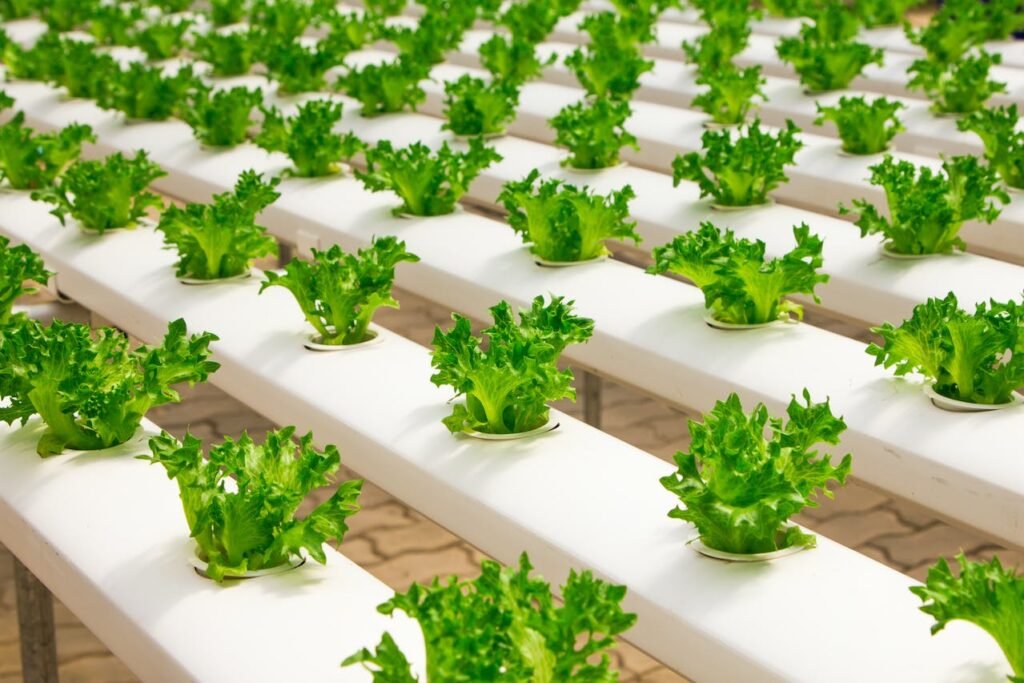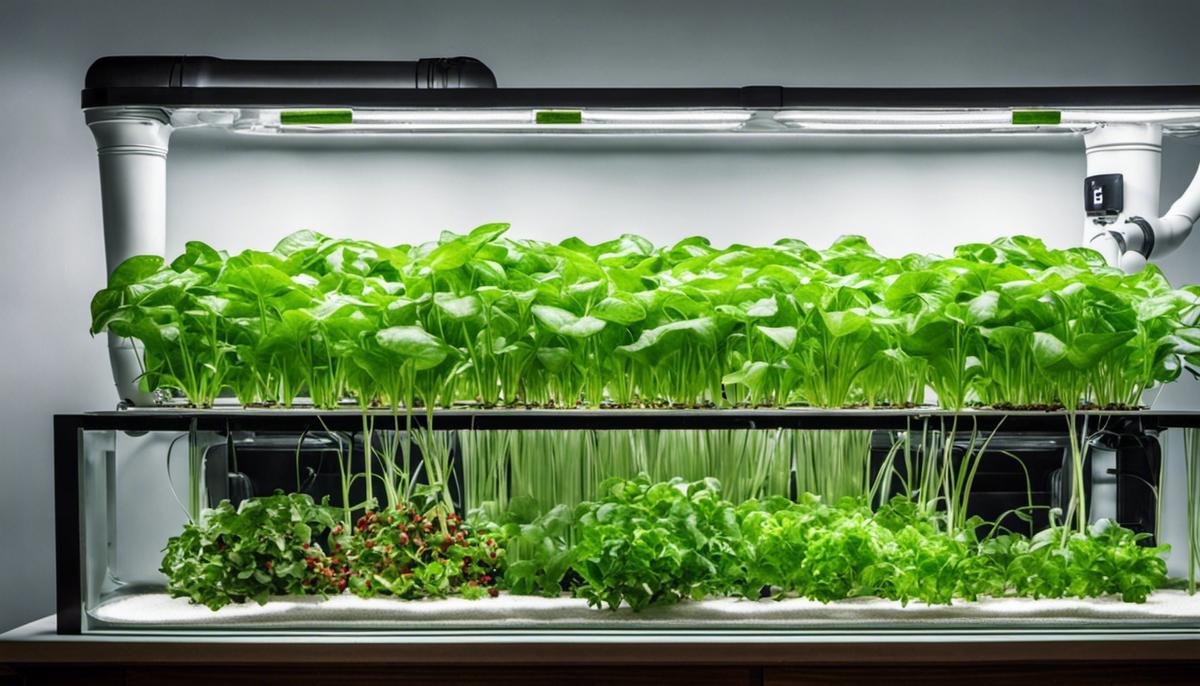Mastering the Art of Hydroponic Gardening
Have you ever considered gardening as a hobby, but been deterred by the idea of managing heavy garden soil? Meet hydroponics – a captivating method of gardening that elicits the growth of plants without soil. The key player here is a mineral nutrient solution, the lifeblood of any hydroponic system that provides all the essential elements that plants need to grow. This radically innovative gardening method has been increasingly capturing the attention of both gardening novices and experts, as it opens up new frontiers of efficiency, cleanliness, and versatility. This essay will take you on an illuminating journey through the fascinating world of hydroponics, revealing how to set up your own system, effectively maintain your garden, troubleshoot common issues, and advance your hydroponic skills to the next level.
Understanding the Basics of Hydroponics
Welcome, fellow green thumbs! Delighted you’ve found your way here. Today’s topic is one that’s fascinated many since its introduction, a seemingly magical way to grow plants without soil. Yes, you’ve guessed it right – hydroponic gardening. Not just an otherworldly concept, it’s a technique with a solid grounding in foundational principles that transform the way you see and interact with your beloved flora.
So, what are these foundational principles? Let’s dig in, or more precisely, in this case, let’s ‘water in.’
- First off, the need for a soil-less environment. Being the cornerstone of hydroponics, it’s a system where plants are grown in water or inert mediums, like perlite or coconut coir. Remember that the purpose is not to eliminate soil, rather to make nutrients directly available to the plants. This brings us to our second principle – nutrient solution.
Nutrient solution is the lifeblood of the hydroponic garden – no exaggeration there. Plants require an array of nutrients to sustain growth, usually absorbed from soil. But in hydroponics, these nutrients are dissolved directly into the water. The precise combination and balance ensures robust growth and better yield that might seem straight out of Jack and the Beanstalk!
Speaking of water, the third principle focuses on oxygenation. While inundation in water might appear the antithesis of plant health, hydroponics manages this beautifully. Oxygenation systems like air stones or diffusers ensure that roots receive ample oxygen, leading to vigorous plant health and impressive growth.
Moving on, it’s time to dispel the darkness with the fourth principle: lighting. When you’re hydroponic gardening, lighting isn’t just an aesthetic choice. It’s as necessary for plant life as soil in traditional gardening. From full spectrum fluorescent bulbs to horticultural LEDs, lighting technologies continuously evolve, ensuring that each leaf gets the ideal amount of light energy for photosynthesis.
Our fifth and final principle, some might say the peacekeeper of a hydroponic garden, is pH regulation. The pH level of the nutrient solution can make or break the garden. As such, it’s of utmost importance to maintain a pH level – typically 5.8 to 6.3 – that allows nutrients to be accessed by the plants efficiently.
Making sense so far? Understanding these principles propels a hydroponic novice miles ahead in their quest for growing that perfect tomato, or the brightest flower, or a whole garden inside their mind – the beauty of hydroponics lies in its infinite possibilities.
A boost in yield, health, and happiness of the plants. A journey from soil to water. A better understanding of nature. Isn’t that what every gardening enthusiast dreams of? In hydroponics, these aren’t merely dreams, but achievable goals, built on these foundational principles, paved with love for plants and dedication to their care.

Setting Up Your Hydroponic System
Harnessing H2O: Paving Your Pathway to a Flourishing Hydroponic Garden
Submersing oneself into the world of hydroponics imports a sense of wonder second to none, and every successful hydroponic system apexes on two key cornerstones: practicality and efficiency. Marrying these elements thrives on a keen understanding of setup variations, system types, growing media, and the meticulously composed balance of water and nutrients.
The selection of a system type hinges on the prospective cultivator’s unique context. The choice must draw from your available space, the type of plants you wish to grow, and the resources at your disposal. There’s a vast array of hydroponic setups to choose from, including Ebb and Flow, Nutrient Film Technique (NFT), Deep Water Culture (DWC), and Aeroponics, each bringing its own strengths and challenges to the table. Choose wisely, remembering that the best system will cater directly to your plant’s needs and your own level of commitment.
Growing medium selection significantly sways the system’s performance. It acts as an anchor for plant roots and assists in nutrient absorption. Reflect on Perlite’s lightweight and superior aeration or Vermiculite’s stellar capability to retain water and nutrients. For a denser medium, Clay Pebbles lend grand aeration and pH stability. Or, explore Coconut Coir’s excellent water retention competency and environment-friendly disposal. Each makes a vastly different impact on your hydroponic endeavor, so discern your pick prudently.
Water is life, and in hydroponics, it’s the lifeblood of the system. Designing an effectual water and nutrient balance is cardinal for a thriving hydroponic garden. Contrive your nutrient solution in adherence to individual plant needs. Each nutrient has a role to play and a deficiency could spell disaster for your green endeavours. Balance your macronutrients – Nitrogen, Phosphorus, and Potassium – understanding their singular contributions. Nitrogen is the energy drink for your plant, aiding in photosynthesis. Phosphorus bolsters root, flower, and fruit development, while Potassium is a general health promoter to bring your plant’s system in synchrony.
One must not overlook the significance of temperature in a hydroponic system. Each species of plant has a specific temperature range within which it thrives. Some prefer a cooler climate while others relish the heat! Understanding and regulating this factor can amplify your plant’s vitality multifold.
Easing into the world of hydroponics tends to be a gentle challenge, but every successful endeavor requires patience and a willingness to learn. But oh, the rewards! The joy of biting into the first successfully grown, scrumptiously juicy tomato from your own hydroponic setup… that, friends, is a true gardener’s delight!

Maintaining Your Hydroponic Garden
Hydroponic gardening techniques offer a new frontier for hobbyists. As Central Park once said, “The growth and development of people is the highest calling of leadership.” Here, we apply this wisdom to our plants. Getting hands-on with hydroponics allows any thalassophile to feel like Poseidon, ruling a verdant undersea garden. However, hydroponics doesn’t just happen–success requires exact science, practiced techniques, and a lot of dedication.
Practicality and efficiency must be at the heart of any hydroponic approach. Just like a carpenter wouldn’t use a hammer where a screwdriver is needed, different plants in different environments demand different hydroponic setups. Ebb and Flow, Nutrient Film Technique, Deep Water Culture, Aeroponics–each system type has its strengths and weaknesses. As hobbyists, it is our responsibility, our joy, to pair the correct system with the right available space, selected plant, and resources at hand.
Can a skyscraper be built without strong foundations? Of course not, and the same applies to our green endeavors. An often underappreciated but crucial component of hydroponics is the choice of growing medium. Perlite, Vermiculite, Clay Pebbles, Coconut Coir–each one has its particular qualities and drawbacks. As a skilled hydroponic enthusiast, understanding how these different mediums influence plant health, nutrient absorption, and moisture retention is just one of the keys to unlocking a thriving garden.
Another essential key is designing a balanced water and nutrient solution. Vitamins and minerals are to plants what protein and carbs are to humans–a necessity for growth and life. Macronutrients, like Nitrogen, Phosphorus, and Potassium, are the steak and potatoes of plant nourishment. Comprehending the role these nutrients play in plant growth will catapult any garden from just surviving to truly thriving.
Don’t forget! Plants, too, are creatures of comfort. To be at their best, they require temperature regulation–a happy medium (no pun intended) between the extremes. Much like Goldilocks, plants prefer conditions that are ‘just right’. Being vigilant about temperature control plays a vital role in maintaining plant vitality and, in turn, a healthy, bountiful hydroponic garden.
Indeed, the greatest joy comes when the leafy, ripe fruits (or vegetables) of hydroponic labor are ready for harvesting, a testament to the successful mastering of specific techniques and hydroponic systems. So, on we march, fellow hydroponic enthusiasts, tending to our aquatic Edens, with careful calculation, detailed observations, and a lot of hearty plant love. It’s a wild world of growth and vigor waiting for us out there! Let’s dive in and make some waves in the fascinating world of hydroponics.

Troubleshooting Common Hydroponic Issues
Indeed, hydroponic gardening is a vibrant and dynamic hobby that poses some intriguing challenges. Among these is the identification and handling of plant diseases, various pests, and algae growth.
Plant diseases can be particularly perplexing as they can suddenly infest a pristine hydroponic garden. There are a plethora of plant diseases that could potentially plague a hydroponic garden, but let’s focus on the most common ones: root rot and powdery mildew. Root rot, characterized by a slime-like growth that compromises the root space, can be attributed to a lack of proper oxygenation or water temperatures that are too high. Powdery mildew, identified by the presence of white powdery spots on plant leaves, is commonly caused by high humidity. To combat these, consider investing in reliable water chillers for temperature regulation and submersible pumps for effective aeration. Proper spacing among plants can also deter the spread of powdery mildew.
Another challenge encountered in hydroponic gardening is pest management. Yes, even in carefully controlled indoor environments, pests can find a way. Spider mites, aphids, and whiteflies, may lurk about and disrupt your harmonious garden. The use of neem oil sprays or introducing beneficial insects such as ladybugs and parasitic wasps prove to be effective countermeasures against these unwelcome visitors.
Concomitantly, keeping algae at bay is an imperative. While a small amount of it may seem harmless, when left unchecked, it can become an eyesore that detracts from the beauty of the garden. More importantly, it can clog irrigation systems and create an environment conducive to pests and diseases. Employ light proof reservoirs and regularly clean and rotate your nutrient solutions to discourage their growth.
Remember, hydroponic gardens may initially necessitate extra attention due to these challenges. Yet with patience, perseverance and a meticulous eye, managing these trials becomes part of the dynamic joy that is hydroponic gardening. Each issue conquered deepens understanding, enriches experience, and heightens satisfaction. So, let’s continue to unpack the world of hydroponics, where challenges are merely opportunities to grow, both for the plants and the gardener.

Advancing Your Hydroponic Skills
Hydroponic gardening invites one into a fascinating realm of horticulture where traditional soil-based boundaries give way to infinite potentials hitherto undreamed of— it is an endless garden of discovery. Let’s plunge further into this bountiful river of nourishing knowledge, to fuel one’s passion, while accentuating unique skills for even greater success with hydroponics.
Taking the scope beyond the confines of hydroponic system types, growing mediums, and nutrient solutions, it’s time to wade into the deep waters of battling diseases and pests in hydroponics, and examining methods to prevent algae growth in the setup. On this hydroponic journey, awareness of these aspects fosters an ever-thriving garden.
Recognizing the existence of plant diseases peculiar to hydroponics can drastically improve outcomes. Predominant among these diseases include root rot and powdery mildew. Root rot arises mainly from excessive water retention and often signifies a lack of proper oxygenation and excess heat. By employing water chillers and submersible pumps to maintain the right temperature and encourage better oxygenation, these diseases become easier to handle. Also, adhering to proper spacing rules when setting up the garden can become a game-changer in root health and overall plant vitality.
Similarly navigable is the world of pests in hydroponic gardening. Spider mites, aphids, and whiteflies, though common, can be moderated by using proven countermeasures like neem oil sprays or introducing beneficial insects into the garden ecosystem. It might seem like an arduous task, but with persistence, it becomes as natural as tending traditional soil-based crops.
Bear in mind that a hydroponic garden, while fertile, is not immune to some of the ubiquitous problems of gardening such as algae growth. However, this challenge also presents a chance to deepen one’s expertise in hydroponics even more. Through implementing preventative measures like light proof reservoirs and regular cleaning and rotation of nutrient solutions, the battle against algae growth becomes not just winnable, but enjoyable — a test of wit against nature.
‘Extra attention and perseverance’ might as well be the unofficial slogan of hydroponic gardening. Yes, hydroponics can throw up challenges, but it’s overcoming these challenges that brings that profound satisfaction every gardener craves, the feeling of quiet triumph when they witness their thriving plants. This world is indeed exciting and dynamic, but remember, the journey to skillfulness in hydroponics might be long and winding, but every step rewards one with the awe-inspiring sights and deep-rooted wisdom of this ever-evolving landscape.

Understanding and mastering hydroponics isn’t an overnight process; it encompasses learning the basics, setting a functional system, embracing the routine of garden maintenance, tackling possible challenges, and continually advancing your knowledge and skills. However, the rewards are substantial – ranging from the satisfaction of self-sustenance to witnessing the mesmerizing beauty of your fruitful hydroponic garden. The world of hydroponics holds numerous layers of intrigue and sophistication that feasibly transform your hobby into a passionate pursuit. So engage, experiment, learn, and lose yourself to the enchanting rhythm of hydroponic gardening, and watch a simple hobby transcend into an immersive, life-changing experience!

